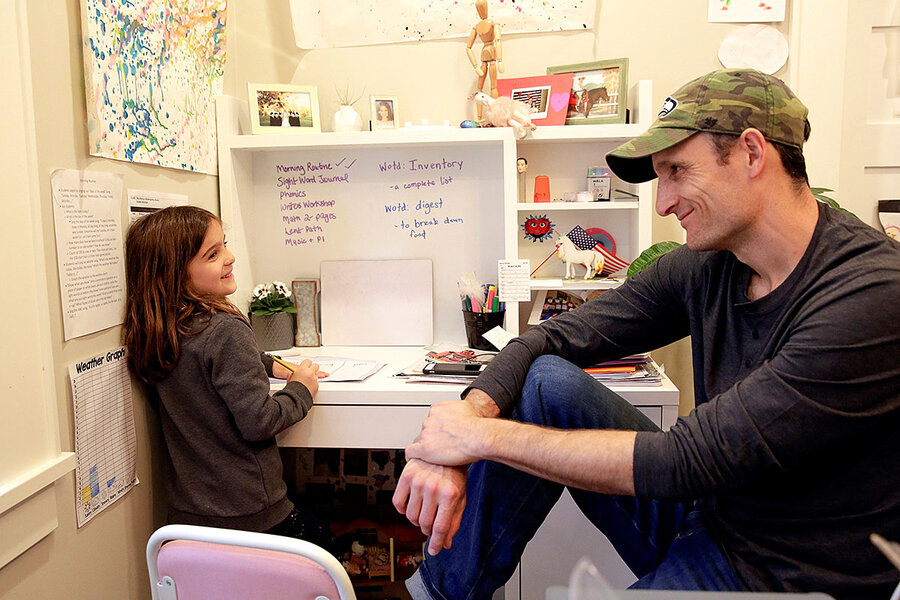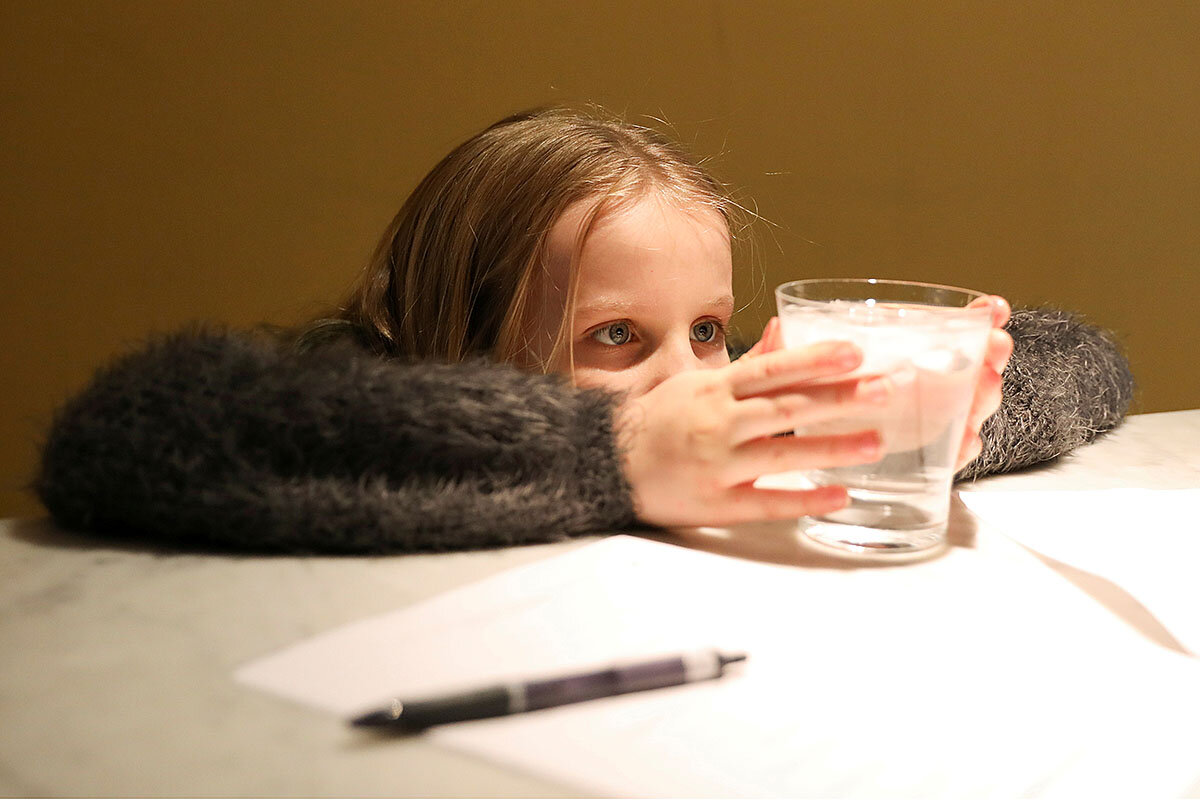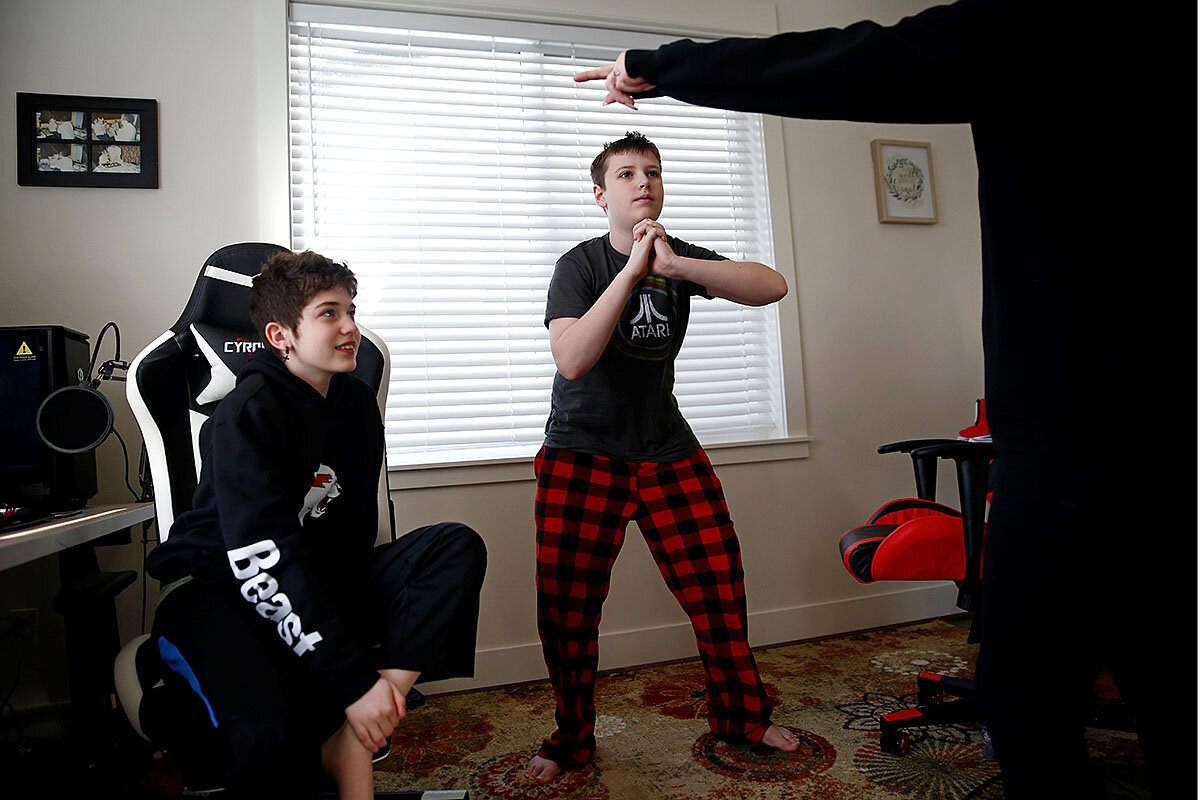How online learning may be more than a stopgap in the US
Loading...
Jessica Calarco has been thinking a lot recently about the importance of school.
This isn’t just because the sociology professor has been learning firsthand, like so many millions of other parents around the country, how life works without school. (For her, it involves new locks on the office door to keep her 5- and 2-year old from interrupting the Indiana University classes she is now teaching by Zoom.)
No, for Professor Calarco, the new life of trying to get a preschooler to do worksheets while a toddler runs amok in the background has brought up a host of concerns about what this unprecedented moment in American education might mean long term – particularly for disadvantaged students.
Why We Wrote This
What changes to the way children are educated might come after the current pandemic? While there are still shortcomings to address, some see innovation happening in online learning – and in how people think about the goal of education.
Editor’s note: As a public service, all our coronavirus coverage is free. No paywall.
Professor Calarco studies inequity in education. Recently, she published a paper on the difference in homework expectations for low-income families. So she worries about increasing educational disparity as tens of millions of students bring all of their work home, for an unknown length of time.
“Homework-related inequalities become even more consequential now that schooling has basically all been pushed home,” she says.
Professor Calarco is far from the only one thinking about the long-term impact of the coronavirus pandemic’s impact on the education system. As of April 2, at least 55.1 million students were out of school in the U.S., according to Education Week, which has been keeping a running tally of school closings. At least 124,000 schools have been impacted by the coronavirus crisis, according to their count – nearly all of the 98,000 public and 34,000 private schools that exist in the country, according to the National Center for Education Statistics.
“There’s no way you can get through an experience like this without some sort of impact,” says Vicki Zakrzewski, education director at the Greater Good Science Center at the University of California, Berkeley. “I wonder if it won’t change how we view the purpose of education. In the West it’s been about academics. How to survive in a global marketplace. This is making us step back and question what is important.”
At this point, the predictions are theoretical. As Michael Hansen, senior fellow and the director of the Brown Center on Education Policy at the Brookings Institution, says, a lot depends on whether schools and families treat this moment like an extended snow storm – a monthlong closure after which everything goes back to normal – or a fundamental shift.
But he and others say that, at the very least, the experience in online learning for millions of students will change the way schools approach virtual education.
“There has been an overall resistance to technology [in schools],” Mr. Hansen says. “I do believe this will be something that will motivate more schools and districts and states to take the virtual learning environment and classroom much more seriously.”
Indeed, over the past weeks, students and teachers have jumped into all varieties of virtual education, from Google classroom videos to Zoom lectures to virtual field trips. But as Jennifer Mathes, interim chief executive officer for the nonprofit Online Learning Consortium, says, many educators are just scratching the technological surface.
“What we’re seeing right now doesn’t fully reflect what online can do,” she says. She expects that as educators continue teaching remotely – and even after they come back to the physical classroom – they will likely delve into a more concerted and sophisticated exploration of how to embrace online learning.
“I don’t think anyone ever saw something like this happening on this scale,” she says. “But it could happen again. We’re going to have to be prepared to shift into online learning and do it in a way that is effective.”
While Mr. Hansen says he doubts that the online classroom will replace much elementary education – just check out the memes posted by parents trying to work at home while managing their second graders’ internet-based lessons – he sees a potential for virtual education to affect older grades. High school, for instance, has long puzzled educational reformers, resisting the achievement gains enjoyed over the past decade by younger students. Perhaps, he says, online learning could be used for innovation in these older grades.
“I wouldn’t be surprised to see more and more states requiring one or two virtual classes in high school,” he says.
But as Professor Calarco points out, there are issues with any large movement to online education. There is still a large digital divide in the U.S. According to the Pew Research Center’s analysis of 2015 U.S. census data, nearly a third of lower income school-age children lack access to high-speed internet. Those same children are least likely to have parents with the time and resources to give extra academic help, Professor Calarco says.
This is part of the reason why Randi Weingarten, president of the American Federation of Teachers, believes the pandemic will push schools in the opposite direction.
“People thought, ‘Online. It’s going to replace teaching and learning.’ Nope. Now people are seeing all the negatives,” she says. “What you’re seeing is the limitation of remote learning and online learning.”
In her view, the pandemic may well remind people of the importance of school. Beyond academics, schools can serve communities as a source of food for lower income students, counseling, and the arts. Teachers may also be able to do their jobs more creatively, she says. The federal government has lifted requirements for standardized testing; teachers now have more independence to create the best curriculum possible for their students.
“People are starting to appreciate again the bricks-and-mortar schools; what they mean for socialization, relationship building,” Ms. Weingarten says.
Claire Leheny, executive director of the Association of Independent Schools in New England, is also thinking about relationships.
“How do you keep community at this moment?” she says. “What does community mean when we don’t congregate? How do you keep community in a virtual world? Our leaders are grappling with that.”
She, too, is noticing a new sort of innovation and imagination within the education landscape. School leaders, even at the most rigorous schools in the country, are recognizing that they simply won’t be able to teach 100% of the intended curricular material – and some are starting to wonder whether that’s OK, whether the volume of content itself is less important than the underlying skills. The traditional approach of “synchronized learning,” where students are learning together at the same time, is shifting to individual learning. And teachers who have never taught virtually are experimenting with and creating innovative platforms – often doing so in amazing, new ways, she says.
“People ask, ‘What are the things we need to do to keep learning and curiosity alive, but not necessarily have to deliver curricular content in exactly the same way, or in the same volume or quantity,’” she says. “This is a moment that demands learning by our educators … and I’ve got to say, educators like learning.”
Ms. Leheny sees it as inevitable that schools will have to grow and change from this pandemic. So does Ms. Zakrzewski, from the Greater Good Science Center. Her program recently launched the “Greater Good in Education” site, which shares research-based practices in social-emotional learning and character development, among other topics.
“Kids eventually will be going back to school,” she says. “There will be some processing that needs to happen with these children, and with the teachers. What just happened? What did we just live through? It’s not just about the academic tasks anymore. This idea of shared humanity is coming out as a theme. What kind of world do we want to live in?”









